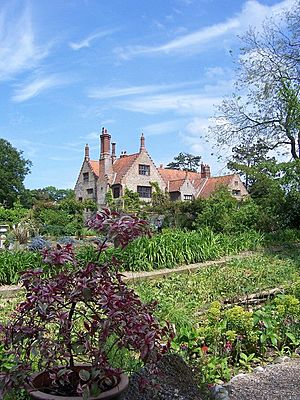John Browne (artist) facts for kids
John Browne (born April 26, 1742 – died October 2, 1801) was a talented English artist. He was known for making engravings of landscapes. Engraving is a way of creating pictures by carving designs into a surface, often metal, to print images. He was also an Associate of the Royal Academy of Arts.
The Life of John Browne
John Browne was born in Finchingfield, Essex, on April 26, 1742. Sadly, his father, John Browne, had passed away before he was born. His father was a rector, which is a type of church leader, in Norfolk. His mother was Mary Pask. Her father was also a vicar, another type of church leader, in Finchingfield.
John Browne went to school in Norwich. In 1755, his great-uncle, a doctor named Messenger Monsey, sent him to London. There, John Browne began to learn engraving from John Tinney, a well-known engraver.
Later, Browne worked with William Woollett, who had also been an apprentice with Tinney. John Browne quickly became very good at engraving. In 1768, he showed an engraving called "St. John Preaching in the Wilderness." This artwork, based on a painting by Salvator Rosa, made him quite famous.
Just two years later, in 1770, he became an associate engraver of the Royal Academy. He became especially known for his excellent landscape engravings. Many of his works were published by John Boydell, a famous publisher. John Browne passed away in Walworth in 1801.
John Browne had two portraits painted of him. One was done when he was a boy by William Woollett. The other was painted a few years before he died by an American artist named Gilbert Stuart. This later portrait was bought by John Boydell and his nephew, Josiah Boydell.
Browne's Family Connections
John Browne's oldest son was John Samuel Browne. He worked at the East India House, a famous trading company. He was also an artist himself and a friend of Reverend William Holwell Carr. John Samuel Browne died in 1858 at the age of 76.
A famous British scholar named William Emerton Heitland (1847–1935) was also related to John Browne through his mother's side of the family.
Famous Engravings by John Browne
John Browne created many beautiful engravings. Here are some of his most important works:
- St. John Preaching in the Wilderness; after a painting by Salvator Rosa.
- A Landscape, with a Sportsman; after G. Poussin; found in the Houghton Collection.
- A Kitchen; after a painting by Teniers.
- The Cottage; after a painting by Hobbema. This was made in 1773.
- The Waggoner; after a painting by Rubens. This was made in 1776 and is considered very good.
- A Landscape; also after Rubens; from a painting owned by the Duke of Montagu.
- The Market; after Rubens; from a painting in the Royal Collection.
- The Milkmaid; after Rubens.
- Apollo and the Muses granting Longevity to the Sibyl of Cuma; after Salvator Rosa.
- Landscape, with a Waterfall; after G. Poussin.
- Landscape, with Procris and Cephalus; after Claude Lorrain.
- Landscape, with the Baptism of the Eunuch; after Jan Both.
- Morning, Evening, after Sunset, and Moonlight; these were made from his own drawings.


